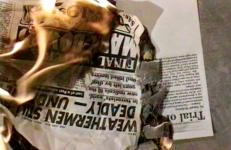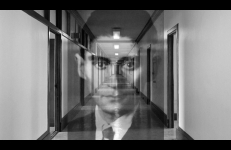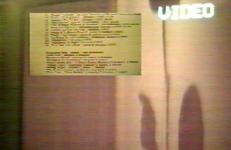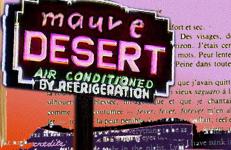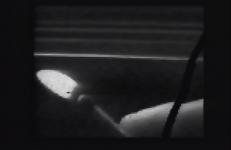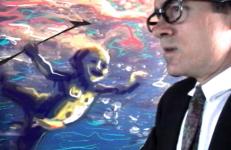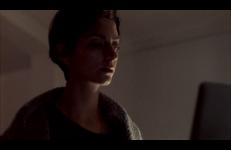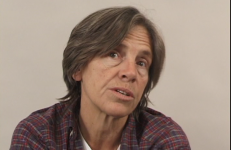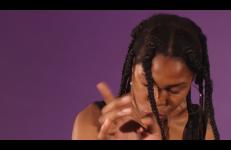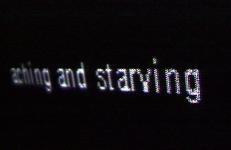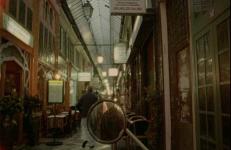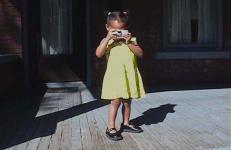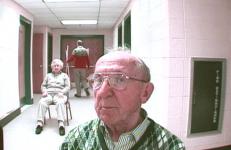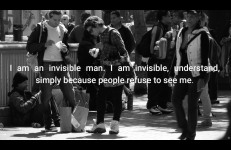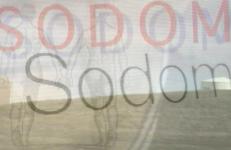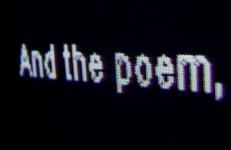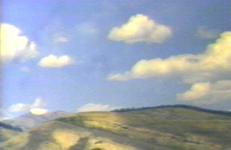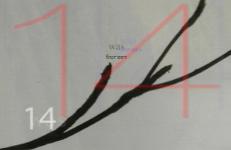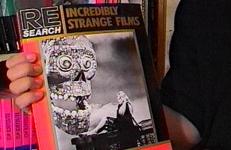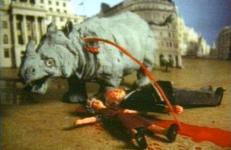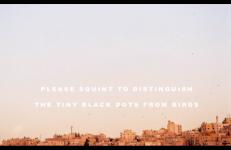Laurie was inspired by Laurie Weeks’ uncanny ability to simultaneously embody her characters and write them from a clear distance. The text in question is just a few paragraphs from a draft of the novel Zipper Mouth, more than ten years in the making, and published by the Feminist Press.
Literature
Letter to a missing woman, based partly on memories of someone who has been a political fugitive since 1983, combines documentary "evidence" and fiction in an imaginative reconstruction of public documents and private history. This is a quiet, obsessive piece addressing the human costs and repercussions of re-inventing oneself – one’s body, memories, and future – as a living piece of propaganda. The writer/narrator of this "crazy letter" is an unreliable one, a composite of half-truths, paranoid digressions, and feelings of loss.
Letters in the Dark was originally shown as a two-channel video installation, accompanied by photographs at the Benrubi Gallery, New York, in 2016. In 2024, Hall decided to make it available as a single-channel work. Its subject matter is the brief epistolary romance between Franz Kafka and Milena Jesenská.
A tour of literary scraps that litter the highway of lost souls in search of publications to be publicized. The crush of printed pulp as it smears its way through the various media that feed off its symbols and excesses. The lust of writers made pure by the whiteness of the sheets they imprint with the shadow markings of their Smith-Corona contraption as it keeps pounding late into the night.
Based upon the novel Le Desert Mauve by Quebeçoise author Nicole Brossard, Mauve Desert, a CD-ROM road movie, was five years in the making. Shot on film and video, framed by original graphics and creative programming structures, and performed in three languages, Mauve Desert finds its voice in the driver's seat (of a computer). Mélanie is a fifteen year-old girl who steals her mother’s Meteor every chance she gets and drives away from her mother’s lover Lorna and toward the dawn.
Based on a novel by Rita Mae Brown, Me and Rubyfruit chronicles the enchantment of teenage lesbian love against a backdrop of pornographic images and phone sex ads. Benning portrays the innocence of female romance and the taboo prospect of female marriage.
This title is also available on Sadie Benning Videoworks: Volume 1.
Psychologically disturbed Professor Herville (Joe Gibbons) analyzes the literary classic Moby Dick. He gives a tour of the Herman Melville Museum and makes much ado about the book’s Oedipial themes. Breer mixes in footage of the Hollywood adaptation starring Gregory Peck and her own irrepressible animation.
This title is also available on Emily Breer: Classics Exposed.
Morel's Yellow Pages focuses on secretive and destructive actions and image making. The title references The Invention of Morel (1940), Adolfo Bioy Casares’s science fiction novel, which informs the work. The artist brings together her research into the use of Baltra Island as an air base for the US army during World War II, and aerial surveillance photographs of the islands, using film footage, documents, and factual information collected during her trip to the Galápagos. Morel's Yellow Pages interweaves fact and fiction, covert and imagined activities.
In this interview, American writer, artist, performer Eileen Myles (b.1949) discusses the various philosophies that motivate her work, including the language of film, embodied performance, and the alienation evoked by bodily vulgarity. Myles links her wide range of artistic and literary practice with notions of abstraction, improvisation, and the mythology of gender, which she explores in relation to her own identity as a working, middle-class lesbian woman. She reflects on the significance of geographical locations, both New York City and San Diego, on her art, and shares how her past struggles with addiction have shaped her life and practice.
Inspired by a riff on a popular joke “Everybody wanna be a black woman but nobody wanna be a black woman,” Notes On Gesture is a video comparing authentic and dramatic gestures. The piece uses the 17th Century text Chirologia: Or the Natural Language of the Hand as a guide to create an inventory of gestures for performance. The piece alternates between title cards proposing hypothetical situations and short, looping clips that respond. The actor uses her body to quote famous, infamous, and unknown women.
“We each have only one single life which is our real life, starting at the cradle and ending at the grave. I warn Dorothy every time I see her that if she doesn’t watch out, her life is going to be left aching and starving on the side of the road and she’s going to get to her grave without it. The farther a man follows the rainbow, the harder it is for him to get back to the life which he left starving like an old dog.”
—Jane Bowles, “Plain Pleasures” in My Sister’s Hand in Mine (New York: Ecco Press, 1978)
An homage to Walter Benjamin and other time-traveling artists and expatriates that have inspired me, especially Chris Marker. Benjamin, fleeing from fascism in the 1930s, took refuge in Paris where Biblioteque Nacional became his home away from home.
Pictures from Dorothy is a current day consideration of the symbolism of Frank Baum’s Wizard of Oz.
Cast: Matilda Washington. Music: David Reid.
This title is only available on Broad Daylight and Other Times: Selected Works of Kevin Jerome Everson.
Both Vermont Landscape and Pond Life followed two opera collaborations with composer Steve Reich. The operas were a new genre called a Theater of Ideas, which said a great deal about the world cultures in which we all live. In contrast, these two small works are quiet, with no words.
A video adaptation of James Joyce’s Ulysses shot at the Parkville Senior Center, Connecticut, with the seniors reading the lines from cue cards. The piece addresses society, war, and personal mortality.
"Beginning in 2020, in response to the cultural and political upheavals that were playing out in the United States, I started making a series of videos to help me understand and cope with what was going on around me. To date, five videos have been made under the heading, Imperfect Union Productions.
"Sodom — for those of you who haven’t been there — is an island about ten miles in length by about two miles in width. There is no depth to it at all. It was built by men as a memorial to God, much the same reasons that I am writing this… to praise and fulfill Him because they had heard He was dead and because His work had apparently come to nothing. The great buildings of Sodom are shaped like tombstones, and the island is populated almost entirely by robots. Man created the robots in his own image, and he created the island in the image of a cemetery.
“And the poem, I think, is only your voice speaking.”
—Virginia Woolf, The Waves (New York: Harcourt, 1978)
This title is also available on Third Known Nest by Tom Kalin.
Taking its title from the sea nymphs in Homer’s Odyssey—the treacherous spirits whose sweet voices lured sailors to their death upon the rocks—Sirens presents four hallucinatory scenes, visual puns authored by a mischievous agent. Mocking laughter that shatters the illusion and causes viewers to doubt the assumptions implicit in their viewing disrupts stills of what seem to be unpopulated landscapes.
Taking its title from the sea nymphs in Homer’s Odyssey—the treacherous spirits whose sweet voices lured sailors to their death upon the rocks—Sirens presents four hallucinatory scenes, visual puns authored by a mischievous agent. Mocking laughter that shatters the illusion and causes viewers to doubt the assumptions implicit in their viewing disrupts stills of what seem to be unpopulated landscapes.
"Look how the willow shoots its fine sprays into the air! Look how through them a boat passes, filled with indolent, with unconscious, with powerful young men. They are listening to the gramophone; they are eating fruit out of paper bags. They are tossing the skins of bananas, which then sink, eel-like, into the river."
—Virginia Woolf, The Waves (New York: Harcourt, 1978)
This title is also available on Third Known Nest by Tom Kalin.
I was fourteen when I put on my first wig. It was, I believe, my sister’s idea. So she and my mother and I went – I forget where…Simmons and Co.? – some elegantish salon with gold lame drapes where they did not do such splendid work. I sat and accepted the wig. It was like having an ax driven straight down the middle of my body. Beginning at the head. Whack! Hacked in two with one blow like a dry little tree. Like a sad little New York tree.
The voice of Mr. V. Vale resonates over the hundreds of books and record albums that line the walls of his apartment in the North Beach section of San Francisco—an apartment that he shares with his body- and soul-mate, Ms. Marian Wallace. Together they put out the series of softcover volumes known as REsearch books. Familiar titles in the series include Incredibly Strange Films and Incredibly Strange Music. See the face and force behind these literary works, and hear the pagan pronouncements of a powerful presence in the world of literature and ideas.
An adaptation of the gruesome and fantastical ending chapter of the notorious experimental anti-novel Maldoror, first published in 1868 and written by a young man (who died soon after writing it) who called himself Comte De Lautréamont. A joyful return to the necessity of Super-8 film tricks, this is part of a larger Anglo-German collaborative feature film Maldoror, shot entirely on Super-8 in sections by 15 underground filmmakers working independently. Includes Super 8 Film, model animation, photo animation and live action.
The Story of Milk and Honey is a short experimental video belonging to a larger project, which includes photographs, drawings and text, detailing an un-named individual’s failure to write a love story. Through voiceover narration that weaves together images, letters, and songs, a story of defeat transpires into a journey that explores how we collect and perceive information, understand facts, history, images, and sound and where the individual is to be found in the midst of the material.
Produced with the Fundación Marcelino Botín Grant for Visual Arts Fund.





